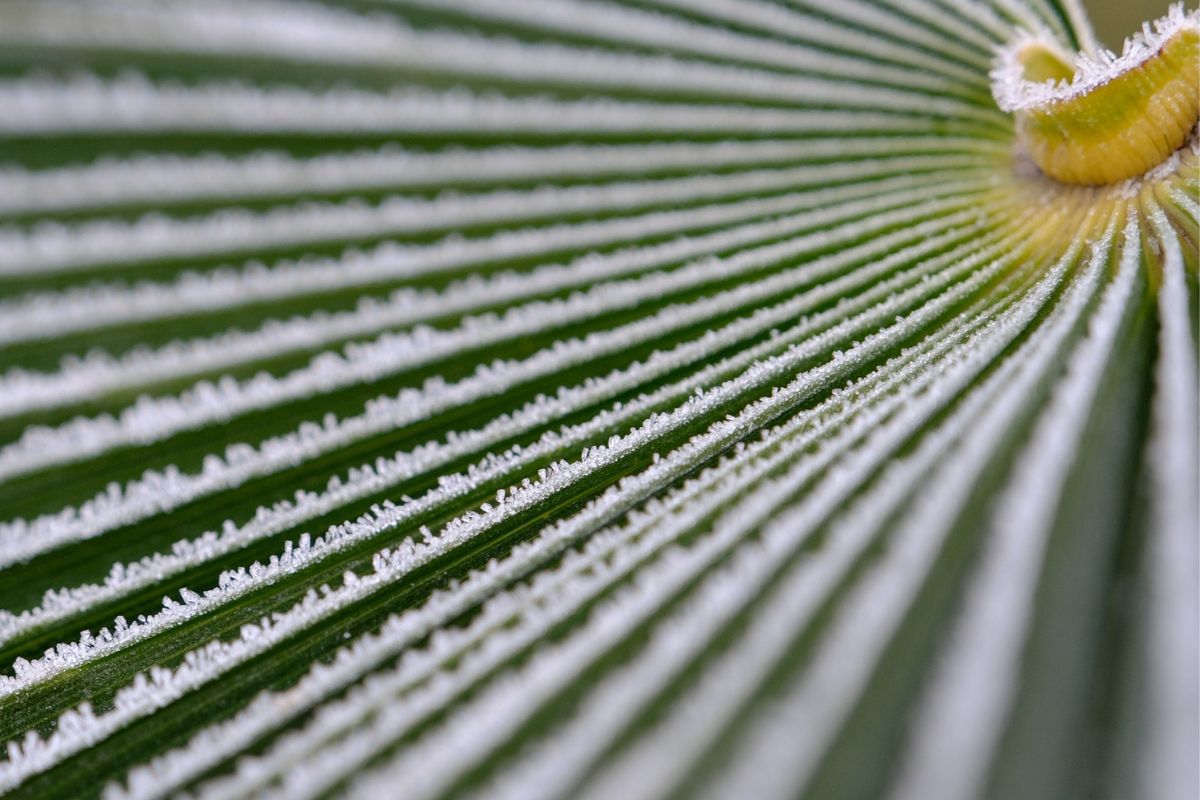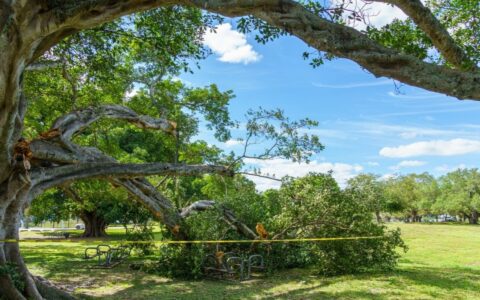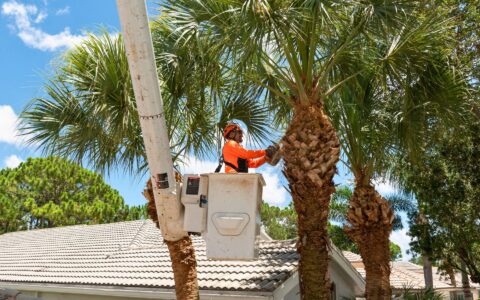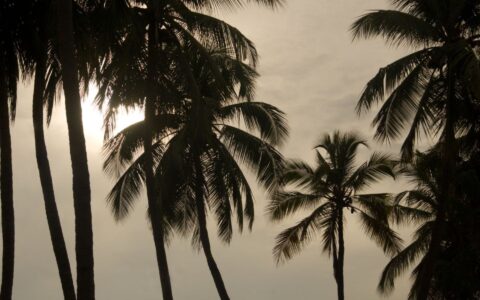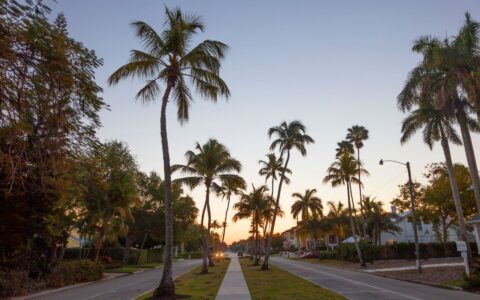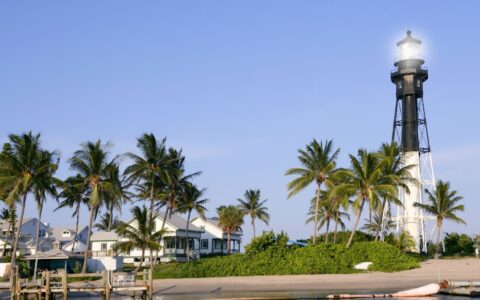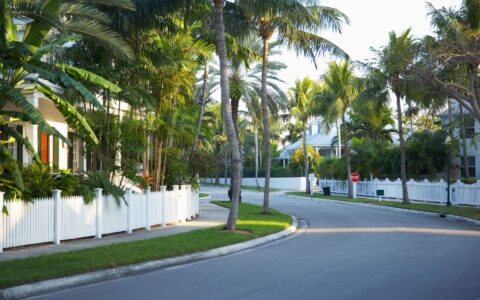It’s rare for temperatures to dip too low here in South Florida, but when it does, our trees, shrubs, plants, lawns, vines, and flowers can suffer.
We previously wrote about how you can protect your plants from cold temperatures.
In this article, we’ll go over how you can help your plants recover once they have been damaged or otherwise impacted by the cold.
Keep reading to learn what to do (and what not to do)!
Uncover any Covered Plants
If you covered any of your cold-sensitive plants to protect them, uncover them during the day. This allows them to be warmed by the sun, prevents condensation from building up inside, and increases the airflow to your plants.
If, however, temperatures are going to return to dangerous temperatures after the sun goes down, cover your plants again.
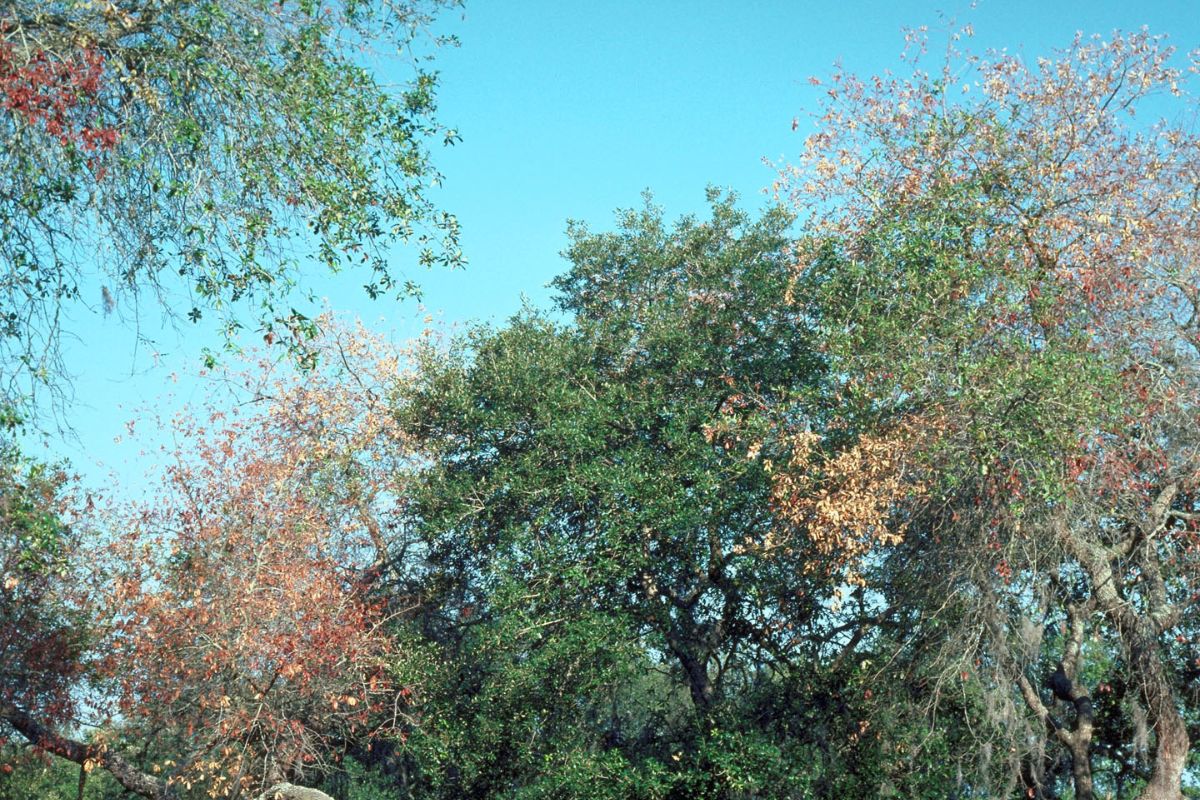
Frost damage to live oaks trees in Florida. Image courtesy of
Edward L. Barnard, Florida Department of Agriculture and Consumer Services, Bugwood.org
Wait to Prune Off any Frost-Damaged Sections
When temperatures drop below freezing, they can cause frost damage, especially to the outer edges of trees and shrubs. You may notice brown and dried-out leaves, branches, or wilted flowers.
If you spot frost damage, wait to prune off the damaged sections. The branches and leaves, even the dead ones, can protect the interior of the plant or tree from further cold damage. Once you wait until the chance of frost (or cold) has passed, then you can prune off the damaged areas.
Schedule your professional pruning >>
Wait to Fertilize
Fertilization encourages plants and trees to produce new growth, which is not what a plant needs after suffering from cold injury. Wait until temperatures stabilize before fertilizing.
Learn more about fertilization >>
Water Plants and Trees
Plants can lose moisture during windy conditions and will transpire on a sunny day after a freeze.
Additionally, thanks to the frozen ground, trees and plants may not have gotten the water that they need. Check your soil – if it’s dry and no longer frozen, water the area around your trees and plants.
Check on your Palms
Palms are used to tropical temperatures so they can be easily impacted by cold weather. However, many signs of winter damage may not appear right away.
When new leaves emerge, they may look deformed or brown. They may grow slower than usual, have a curled appearance, or be slightly yellow.
If the palm fronds turn dark brown or black within a few weeks of the cold temperatures, the palm is showing signs of severe damage. In these instances, the palm may die from the cold injury.
Worried about your palm’s health? Schedule a professional consultation >>
Prepare for the Future Cold Temperatures
It is much easier to protect your plants, trees, and palms from cold weather than to help them recover.
Wrapping or covering sensitive trees or plants, ensuring they have enough water and nutrients, adding organic mulch, and preventing pest or disease issues are the best things you can do to prevent any cold damage to your property.
How to prepare for cold temperatures >>
Wait to See How Your Plants and Trees Fare
Most injuries caused by frost damage or cold temperatures don’t become obvious until the tree or plant begins to create new growth. The newest fronds or leaves will show how much damage was received and will give you a clear picture of the current health of the tree or plant.
While you may want to know and/or fix any issues as soon as possible, many times the best thing you can do is take a “wait and see” approach.
Some cold-damaged plants may take longer to produce new growth, but most of the time they will recover on their own.
Contact Sherlock Tree
When it appears, cold injury and frost damage can look similar to other plant and tree issues, so you may not be able to easily discern what is ailing your property.
Contact Sherlock Tree for a professional assessment of your trees, shrubs, palms, and plants. Our site visits by ISA Certified Arborists include a thorough inspection to evaluate the health conditions of your trees and shrubs and any emerging or potential problems.
Call Sherlock for quality tree services
Whether you're looking for specific tree care services, such as palm trimming, tree removal, or disease treatments, or would like one of our Arborists to examine your trees to identify any issues and recommend options, we're always here for you! Just give us a call at 954-788-4000 to set up an appointment.
SEE MORE ARTICLES
Looking for more?
We've got you covered with a monthly newsletter full of tips, resources, updates, how-to's, and other helpful information about trees and landscapes in South Florida!

